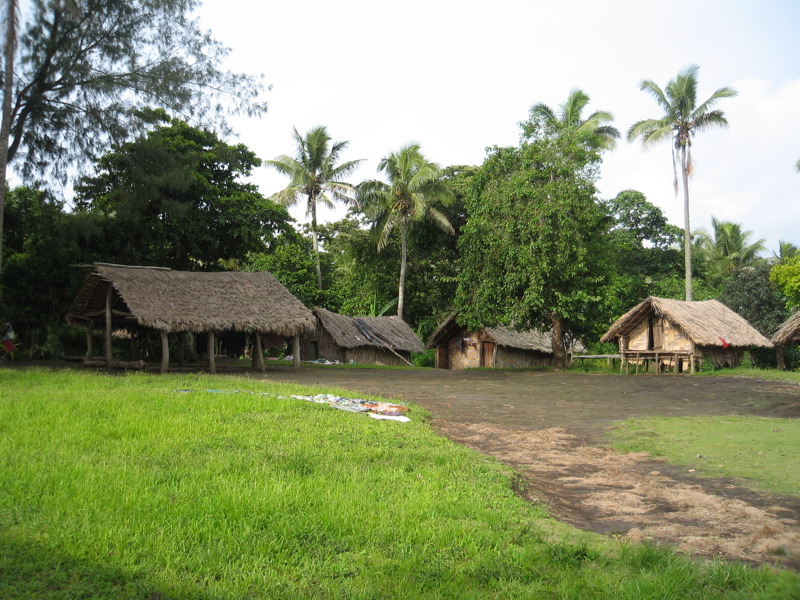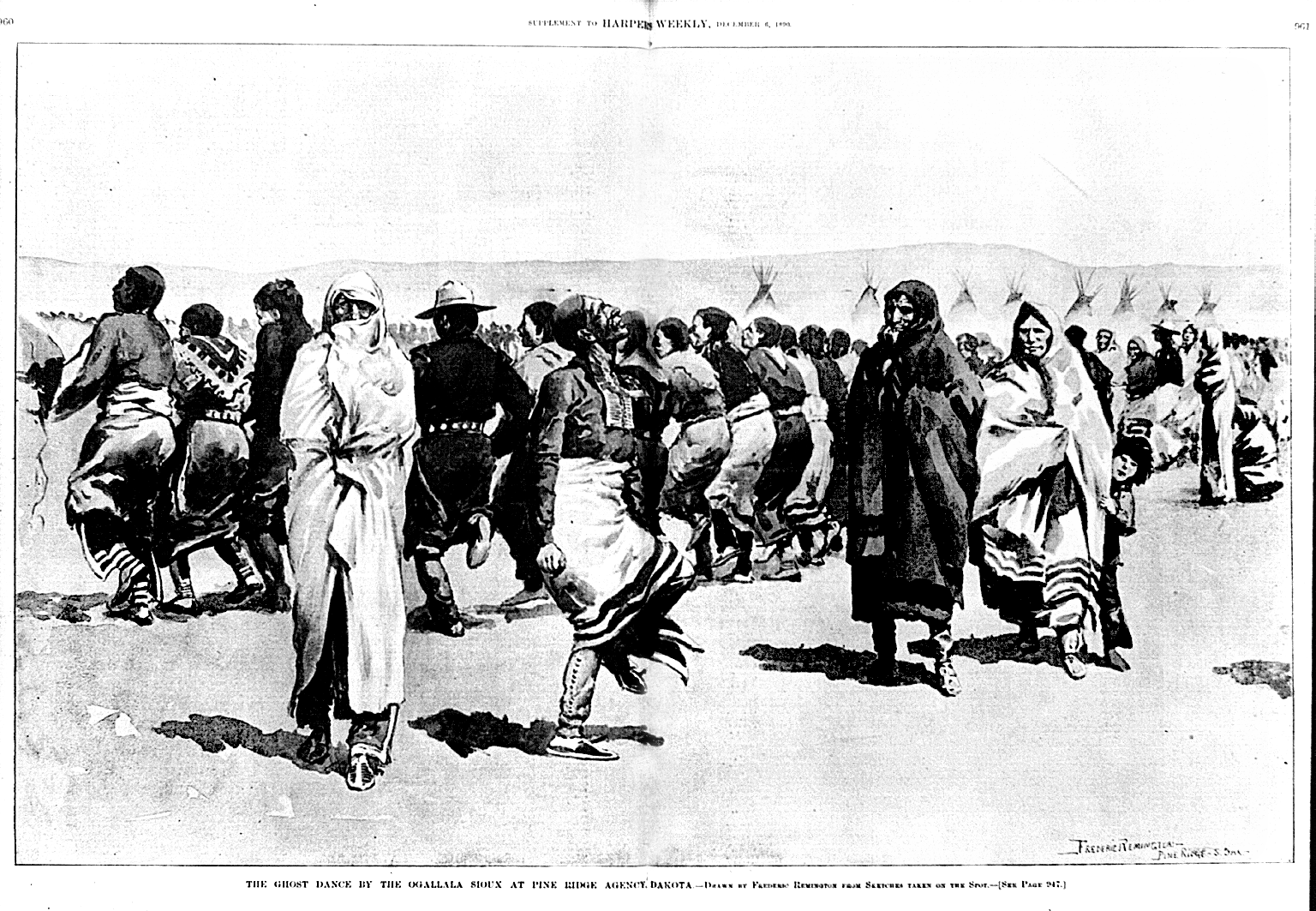|
Vailala Madness
The Vailala Madness was a social movement in the Papuan Gulf, in the Territory of Papua, beginning in the later part of 1919 and diminishing after 1922. It is generally accepted as the first well-documented cargo cult, a class of millenarian religion-political movements. Name The Vailala Madness acquired its name from observations of the behavior of people who participated in it, which included glossolalia, shaking and psychosomatic symptoms. In the indigenous language, participants called it ''iki haveva'', or "belly-don't know", meaning, roughly, "dizziness". Return of the Ancestors The movement included the belief that a 'Ghost Steamer' piloted by the returning dead, would arrive presently, bringing with it a cargo that included, besides departed relatives: tinned food, tools, various other resources; and in one version, guns with which to expel the colonizers. White ancestors The ancestors who would return with the ship were conceived as being white, an idea which recu ... [...More Info...] [...Related Items...] OR: [Wikipedia] [Google] [Baidu] |
Papuan Gulf
The Gulf of Papua is located in the southern coast region of New Guinea. It has a total surface area of . Geography Some of New Guinea's largest rivers, such as the Fly River, Turama River, Kikori River, Purari River, and Wawoi River flow into the gulf, making it a large delta. While the western coast is characterized by swampy tidal waterways, land to the east ending at Cape Possession is flat and sandy. The Papuan Gulf's central and eastern interior slowly rises to meet the mountainous Southern Highlands, and is covered in a variety of inland swamps and dense tropical hardwood forests. The western interior possess a large region of limestone karst. The dry season begins in October and extends to February, after which the wet season starts. The southern border of the gulf is defined as a line from the southwestern corner of the Fly River Delta in the west, to Cape Suckling 355 km east of this, which is 70 km northwest of Port Moresby. This encloses a sea area ... [...More Info...] [...Related Items...] OR: [Wikipedia] [Google] [Baidu] |
Australian Papua
The Territory of Papua comprised the southeastern quarter of the island of New Guinea from 1883 to 1975. In 1883, the Government of Queensland annexed this territory for the British Empire. The United Kingdom Government refused to ratify the annexation but in 1884 a protectorate was proclaimed over the territory, then called "British New Guinea". There is a certain ambiguity about the exact date on which the entire territory was annexed by the British. The Papua Act 1905 recites that this happened "on or about" 4 September 1888.''Commonwealth and Colonial Law'' by Kenneth Roberts-Wray, London, Stevens, 1966. P. 132 On 18 March 1902, the Territory was placed under the authority of the Commonwealth of Australia. Resolutions of acceptance were passed by the Commonwealth Parliament, which accepted the territory under the name of Papua. In 1949, the Territory and the Territory of New Guinea were established in an administrative union by the name of the Territory of Papua and New Gui ... [...More Info...] [...Related Items...] OR: [Wikipedia] [Google] [Baidu] |
Cargo Cults
A cargo cult is an indigenist millenarian belief system, in which adherents perform rituals which they believe will cause a more technologically advanced society to deliver goods. Causes, beliefs, and practices Cargo cults are marked by a number of common characteristics, including a "myth-dream" that is a synthesis of indigenous and foreign elements, the expectation of help from the ancestors, charismatic leaders, and lastly, belief in the appearance of an abundance of goods. The indigenous societies of Melanesia were typically characterized by a " big man" political system in which individuals gained prestige through gift exchanges. The more wealth a man could distribute, the more people who were in his debt, and the greater his renown. Those who were unable to reciprocate were identified as "rubbish men". Faced, through colonialism, with foreigners with a seemingly unending supply of goods for exchange, indigenous Melanesians experienced "value dominance". That is, they ... [...More Info...] [...Related Items...] OR: [Wikipedia] [Google] [Baidu] |
John Frum
John Frum (also called Jon Frum, John Brum, and John Prum) is a mythic figure associated with cargo cults on the island of Tanna in Vanuatu. He is often depicted as an American World War II serviceman who will bring wealth and prosperity to the people if they follow him. Quoting David Attenborough's report of an encounter: E look like you. 'E got white face. 'E tall man. 'E live 'long South America." In the 1990s, there was still reportedly over 5,000 members of the John Frum movement but today (2022) there are less than 500. Now, only the village of Lamakara remains true to the John Frum cause on the island of Tanna. The rest of the island has been mostly converted by Christian missionaries based out of Sulphur Bay. History The religion centering on John Frum arose in the late 1930s, when Vanuatu was known as the New Hebrides, although there was a claim in 1949 that it had started in the 1910s. The movement was influenced by existing religious practice in the Sulphur Bay a ... [...More Info...] [...Related Items...] OR: [Wikipedia] [Google] [Baidu] |
Sioux
The Sioux or Oceti Sakowin (; Dakota language, Dakota: Help:IPA, /otʃʰeːtʰi ʃakoːwĩ/) are groups of Native Americans in the United States, Native American tribes and First Nations in Canada, First Nations peoples in North America. The modern Sioux consist of two major divisions based on Siouan languages, language divisions: the Dakota people, Dakota and Lakota people, Lakota; collectively they are known as the Očhéthi Šakówiŋ ("Seven Council Fires"). The term "Sioux" is an exonym created from a French language, French transcription of the Ojibwe language, Ojibwe term "Nadouessioux", and can refer to any ethnic group within the Great Sioux Nation or to any of the nation's many language dialects. Before the 17th century, the Dakota people, Santee Dakota (; "Knife" also known as the Eastern Dakota) lived around Lake Superior with territories in present-day northern Minnesota and Wisconsin. They gathered wild rice, hunted woodland animals and used canoes to fish. Wars ... [...More Info...] [...Related Items...] OR: [Wikipedia] [Google] [Baidu] |
Ghost Dance
The Ghost Dance ( Caddo: Nanissáanah, also called the Ghost Dance of 1890) was a ceremony incorporated into numerous Native American belief systems. According to the teachings of the Northern Paiute spiritual leader Wovoka (renamed Jack Wilson), proper practice of the dance would reunite the living with spirits of the dead, bring the spirits to fight on their behalf, end American westward expansion, and bring peace, prosperity, and unity to Native American peoples throughout the region. The basis for the Ghost Dance is the circle dance, a traditional Native American dance. The Ghost Dance was first practiced by the Nevada Northern Paiute in 1889. The practice swept throughout much of the Western United States, quickly reaching areas of California and Oklahoma. As the Ghost Dance spread from its original source, different tribes synthesized selective aspects of the ritual with their own beliefs. The Ghost Dance was associated with Wovoka's prophecy of an end to colonial expan ... [...More Info...] [...Related Items...] OR: [Wikipedia] [Google] [Baidu] |
Kerema
Kerema is the capital of Gulf Province, Papua New Guinea. It is located on the coast of Gulf of Papua. The Gulf region is aptly named for its concave coastline with large deltas. The Gulf area is a riparian region where many rivers from the southern slopes of the highlands drain into. Culture and tradition There are more than twenty languages spoken in Gulf Province. Languages spoken in the Kerema area include Toaripi, Kakiae, Opae, Moivo Hivi and Tairuma. The villages towards the east of Kerema from Hamuhamu, Miaru to Iokea and inland to Moveave all speak Toaripi. The Gulf's traditional culture and knowledge was one of the first to be exposed to the outside world. Thus it was one of the first cultures to change, as outsiders, mainly Christian missionaries have visited many of the coastal people and encouraged them to abandon much of their native culture. History James Chalmers, or 'Tamate' as the locals of Toaripi called him, was the first white man to land in the prov ... [...More Info...] [...Related Items...] OR: [Wikipedia] [Google] [Baidu] |
James Chalmers (missionary)
James Chalmers (4 August 1841 – 8 April 1901) was a Scottish-born missionary, active in New Guinea. Early life James Chalmers was born in the village of Ardrishaig, Argyll, Scotland, the only son of an Aberdonian stonemason. The family moved to Inveraray when James was seven. There he went to the local school, and then to grammar school for about a year when he was 13. Then he was employed in a lawyer's office at Inveraray, and before he was 20 decided to become a missionary. In 1861, he joined the Glasgow City Mission as an evangelist. Here he met the Samoan missionary, George Turner, who suggested he apply as a missionary candidate. Eight months later, the London Missionary Society sent him to Cheshunt College near London to carry on his studies. He was a good student, though not a brilliant one, and was already showing capacities for leadership. He was also always ready for practical jokes. On 17 October 1865 he was married to Jane Hercus and two days later was ordained to th ... [...More Info...] [...Related Items...] OR: [Wikipedia] [Google] [Baidu] |
Tok Pisin
Tok Pisin (,Laurie Bauer, 2007, ''The Linguistics Student’s Handbook'', Edinburgh ; Tok Pisin ), often referred to by English speakers as "New Guinea Pidgin" or simply Pidgin, is a creole language spoken throughout Papua New Guinea. It is an official language of Papua New Guinea and the most widely used language in the country. However, in parts of the southern provinces of Western, Gulf, Central, Oro, and Milne Bay, the use of Tok Pisin has a shorter history and is less universal, especially among older people. Between five and six million people use Tok Pisin to some degree, although not all speak it fluently. Many now learn it as a first language, in particular the children of parents or grandparents who originally spoke different languages (for example, a mother from Madang and a father from Rabaul). Urban families in particular, and those of police and defence force members, often communicate among themselves in Tok Pisin, either never gaining fluency in a local langu ... [...More Info...] [...Related Items...] OR: [Wikipedia] [Google] [Baidu] |
Initiation
Initiation is a rite of passage marking entrance or acceptance into a group or society. It could also be a formal admission to adulthood in a community or one of its formal components. In an extended sense, it can also signify a transformation in which the initiate is 'reborn' into a new role. Examples of initiation ceremonies might include Christian baptism or confirmation, Jewish bar or bat mitzvah, acceptance into a fraternal organization, secret society or religious order, or graduation from school or recruit training. A person taking the initiation ceremony in traditional rites, such as those depicted in these pictures, is called an ''initiate''. See also rite of passage. Characteristics William Ian Miller notes the role of ritual humiliation in comic ordering and testing. Mircea Eliade discussed initiation as a principal religious act by classical or traditional societies. He defined initiation as "a basic change in existential condition", which liberates man from p ... [...More Info...] [...Related Items...] OR: [Wikipedia] [Google] [Baidu] |
Rumor
A rumor (American English), or rumour (British English; see spelling differences; derived from Latin:rumorem - noise), is "a tall tale of explanations of events circulating from person to person and pertaining to an object, event, or issue in public concern." In the social sciences, a rumor involves a form of a statement whose veracity is not quickly or ever confirmed. In addition, some scholars have identified rumor as a subset of propaganda. Sociology, psychology, and communication studies have widely varying definitions of rumor. Rumors are also often discussed with regard to misinformation and disinformation (the former often seen as simply false and the latter seen as deliberately false, though usually from a government source given to the media or a foreign government). Early work French and German social science research on rumor locates the modern scholarly definition of it to the pioneering work of the German William Stern in 1902. Stern experimented on rumor invol ... [...More Info...] [...Related Items...] OR: [Wikipedia] [Google] [Baidu] |
Papua (Australian Territory)
The Territory of Papua comprised the southeastern quarter of the island of New Guinea from 1883 to 1975. In 1883, the Government of Queensland annexed this territory for the British Empire. The United Kingdom Government refused to ratify the annexation but in 1884 a protectorate was proclaimed over the territory, then called "British New Guinea". There is a certain ambiguity about the exact date on which the entire territory was annexed by the British. The Papua Act 1905 recites that this happened "on or about" 4 September 1888.''Commonwealth and Colonial Law'' by Kenneth Roberts-Wray, London, Stevens, 1966. P. 132 On 18 March 1902, the Territory was placed under the authority of the Commonwealth of Australia. Resolutions of acceptance were passed by the Commonwealth Parliament, which accepted the territory under the name of Papua. In 1949, the Territory and the Territory of New Guinea were established in an administrative union by the name of the Territory of Papua and New Gui ... [...More Info...] [...Related Items...] OR: [Wikipedia] [Google] [Baidu] |






.jpg)
